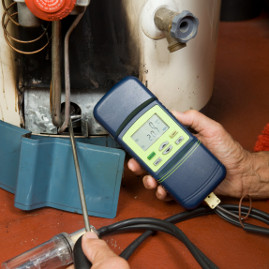Gas Monitoring Equipment: Guidelines For Better Understanding

The air around your workplace may be good, but is it safe? Many companies nowadays, especially those who have factories that Use different hazardous chemicals, have to take steps to safeguard their employees’ safety and health. There are several industrial hygiene gas surveys available today that hold an important role in helping industrial hygienists assess and determine if workers are being exposed to harmful conditions in their workplace.
Today’s innovations have paved the way for portable gas monitoring instruments that can be a valuable tool for these surveys, delivering information that is vital to the accomplishment of the goal. With the aim of ensuring that the data collected from the instruments is accurate and reliable, it is important that the industrial hygienists doing the survey have a thorough understanding of the workings of the equipment and the methods it uses for gathering information.

First of all, an in-depth understanding of the instrument’s detection limits is needed. It should comprise not only what it is detecting but also where. Generally speaking, these portable gas monitoring instruments, including the sensors within them, are intended to be dispersal sensing devices. This means that the instrument is capable only of identifying hazards in the close vicinity. The unit can effectively determine only the atmosphere directly at the end of the sample tube. If you are trying to precisely measure the exposure of a worker’s respiratory system to different hazardous gases, it is critical that the equipment is close enough to the worker’s breathing zone for the collection of data. This will ensure that the instrument is exposed to the same air that is being inhaled into the worker’s lungs.
It is also vital to know what you are really measuring. Now, let’s focus to what exactly the instrument is detecting. One should install the proper and correct sensors in the instrument before starting to collect data. There are instruments available which hold as many as five or six sensors so as to detect several gases at a time. Despite the fact that many of these sensors are made to detect a particular gas, they will likely provide some responses to other gases as well as to their specified target. Certainly, the data gathered from the device will only be as precise as the instrument’s calibration. These portable gas monitoring instruments should be calibrated preceding the start of the examination to ensure their accuracy. The calibration should then be confirmed at the finishing point of the survey in order to verify the validity of the data. First and foremost in calibrating these instruments, you must always check your calibration gas; after the calibration gas is checked and verified accordingly, you should take note of the date and then zero and start calibrating the device or unit; and lastly, if the instrument fails or misses a bump, try recalibrating it. Remember these tips so that you can obtain the most accurate result in your gas monitoring activities.
In the process of data collection, some may find it advantageous if the instrument itself has the ability to recognize who is accumulating the data or who the focus of the survey is, and from what location the data is being collected. Gas monitoring equipment capable of storing data will put time and date stamps on the information. Several types offer an additional capability of recording user and location information, and at the same time coordinating it with the analysis data itself.
To sum it up, the gas exposure data collected in industrial hygiene surveys is critical for establishing practices and making decisions that can affect the health and safety of the workers. Before doing your next survey or monitor, make certain that you have the correct understanding regarding the monitoring equipment you have to use, the gases you are observing for, and the techniques used for gathering the data. Always pay careful attention to these aspects to lessen the probabilities of having to repeat the whole survey, ensuring you do the job right the first time.
